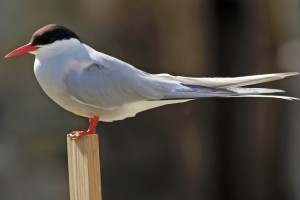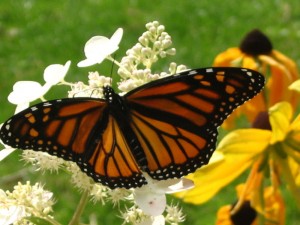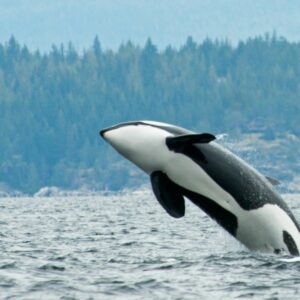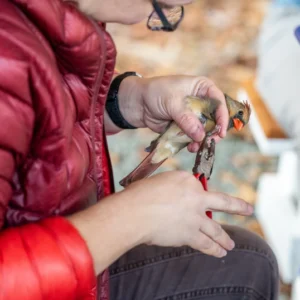Great Winged Migrations
Arctic Tern

No animal on earth travels farther every year. The Arctic Tern’s round trip migration from the Arctic to the Antarctic clocks in at an astounding 70,800 kilometers!
Weighing in at just over 100 grams, this small, slender seabird can live for up to thirty years. Over a lifetime it can accumulate up to 2.4 million kilometers in total distance travelled, which includes migrations and flight within its seasonal range at each pole.
Until recently, the Arctic tern’s migratory routes had not been mapped in great detail. With the help of smaller, lighter tracking devices, the mystery of its journey has been revealed.
It is believed there are about one million Arctic terns in the world, but data is scarce so populations are difficult to determine, and there are no estimates for most of its’ breeding grounds. It is known that southernmost populations are declining and are listed as “of special concern.”
Monarch Butterfly
Every autumn, thousands of Monarch Butterflies in Ontario fly through Point Pelee on their way south to Mexico. If temperatures are unforgiving, they will often roost in trees, biding their time until the mercury begins to rise. Their first great hurdle on a 3,0 00km journey, is crossing Lake Erie. Once they reach the mountains of central Mexico, they congregate by the millions in a forest of fir trees.
00km journey, is crossing Lake Erie. Once they reach the mountains of central Mexico, they congregate by the millions in a forest of fir trees.
A smaller population of Monarchs lives in central British Columbia, migrating to southern California to reach their wintering sites. Both populations of Monarchs need plenty of fuel before embarking on their journeys south. You can help ensure Monarchs have the food they need throughout their lifespan by planting a monarch butterfly garden. Bring these black and orange jewels to your yard by following our tips to get your garden started!
While not at immediate risk of extinction, monarch populations are continue to be monitored for signs of trouble. Under Canada’s Species at Risk Act the Monarch is listed as a species of “Special Concern”.
Sandhill Crane
The world’s most common crane has three migratory subspecies: Lesser, Greater and Canadian. These populations breed in parts of the northern United States and Canada and spend their winters in Mexico and southern parts of the United States. En route, large numbers of Sandhill Cranes stop to refuel in the corn fields of Platte River, Nebraska. Some estimates put the seasonal Platte River population of Sandhill Cranes at nearly 500,000 birds!
Hoary Bat
 |
| Photo: J.N. Stuart via Flickr |
The largest of 19 bat species in Canada, the Hoary bat weighs 30 grams and has a wing span of 40 cm. Found widely throughout the United States and Canada, the Hoary Bat is also one of very few bat species that migrate.
In the fall, Hoary Bat populations migrate south to southern coastal parts of the United States, including the West Coast south of San Francisco south, the East Coast from South Carolina to central Florida, and throughout the Gulf States. When they do reach their final destination, they are highly territorial when hunting, returning each night to the same meadow or river to hunt large insects like moths and beetles.
 |
| Photo: nebarnix via Flickr |
Swainson’s Hawk
One of the world’s longest-distance migratory hawks, the Swainson’s Hawk makes a 20,000km return trip every year from western North America to the pampas in South America. With the help of northerly winds and thermal currents flocks, called ‘kettles’, funnel through Panama on their way south. This important piece of land bridging North and South America, will see thousands of Swainson’s Hawks during the spring and fall migrations.
Before it sets off, Swainson’s Hawks will gorge on grasshoppers, since for most of its migration it will not stop to feed or rest, making it critical for it to put on extra weight to prepare for the long journey south.
Have flocks of migrating birds, bats or butterflies passed through your area? Share your stories of migration with us in the comments below!



